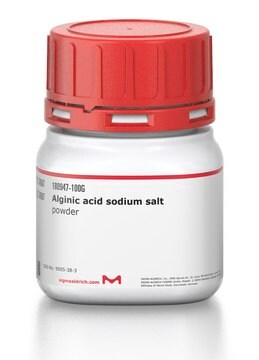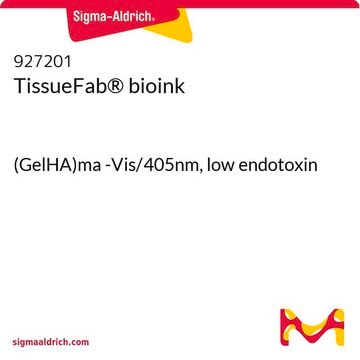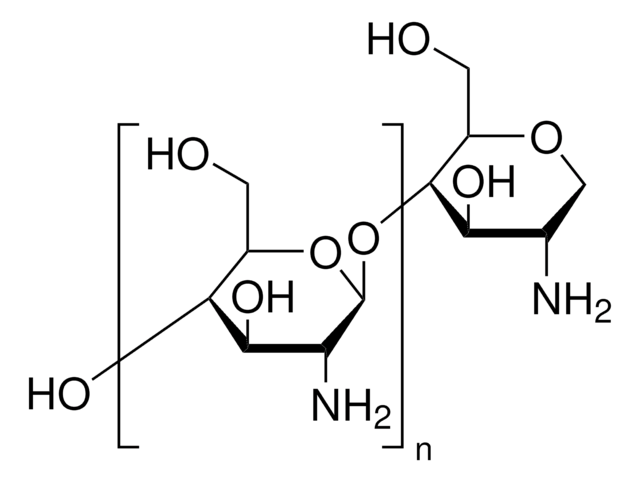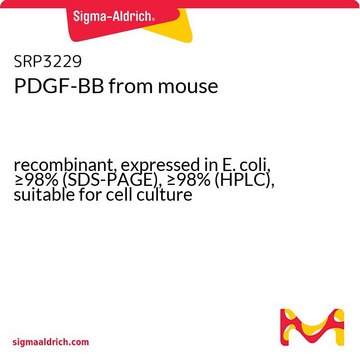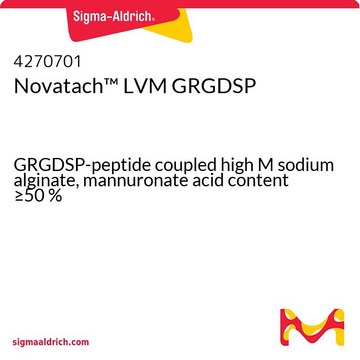Kluczowe dokumenty
927228
TissueFab® bioink
(GelAlg)ma-Vis/405nm, low endotoxin
Synonim(y):
Alginian, Alginian metakrylamidu, Alginian metakryloilu, Alginian sodu, Bioink AlgMA-LAP o niskiej zawartości endotoksyny, Biotusz alginianowy o niskiej zawartości endotoksyny, Metakrylan alginianu
About This Item
Polecane produkty
Poziom jakości
opis
HNMR in D2O at 40 °C
sterylność
0.2 μm filtered
Formularz
viscous liquid (to gel)
zanieczyszczenia
<5 CFU/g Bioburden (Fungal)
<5 CFU/g Bioburden (Total Aerobic)
<50 EU/mL Endotoxin
kolor
pale yellow to colorless
pH
6.5-7.5
lepkość
15-60 cP(37 °C)
kompatybilność
3D bioprinting, extrusion bioprinting
temp. przechowywania
2-8°C
Szukasz podobnych produktów? Odwiedź Przewodnik dotyczący porównywania produktów
Opis ogólny
Biotusz ten pozyskiwany jest z naturalnych polimerów - alginianu i żelatyny. Alginian, znany również jako alginian sodu lub kwas alginowy, jest naturalnym biopolimerem uzyskiwanym z alg brunatnych. Alginian jest naturalnym polisacharydem szeroko stosowanym w inżynierii tkankowej. Żelatyna zawiera bioaktywne sekwencje peptydowe podobne do natywnej macierzy zewnątrzkomórkowej, które promują adhezję komórek za pośrednictwem integryn i degradację enzymatyczną wrażliwą na MMP, które są niezbędne dla funkcji komórkowych, takich jak migracja, proliferacja i różnicowanie.
Niska zawartość endotoksyn, niskie obciążenie biologiczne: Wykazano, że endotoksyny mają negatywny wpływ na wzrost komórek, morfologię, różnicowanie, stan zapalny i ekspresję białek. Obciążenie biologiczne definiuje się jako liczbę skażonych organizmów znalezionych w danej ilości materiału. Testujemy każdą partię pod kątem endotoksyn, a także całkowitego obciążenia biologicznego (tlenowego i grzybiczego), aby zminimalizować niepożądane interakcje. Więcej informacji: https://www.sigmaaldrich.com/US/en/technical-documents/technical-article/microbiological-testing/pyrogen-testing/what-is-endotoxin
Opakowanie
Informacje prawne
Kod klasy składowania
10 - Combustible liquids
Klasa zagrożenia wodnego (WGK)
WGK 3
Wybierz jedną z najnowszych wersji:
Certyfikaty analizy (CoA)
It looks like we've run into a problem, but you can still download Certificates of Analysis from our Dokumenty section.
Proszę o kontakt, jeśli potrzebna jest pomoc Obsługa Klienta
Masz już ten produkt?
Dokumenty związane z niedawno zakupionymi produktami zostały zamieszczone w Bibliotece dokumentów.
Nasz zespół naukowców ma doświadczenie we wszystkich obszarach badań, w tym w naukach przyrodniczych, materiałoznawstwie, syntezie chemicznej, chromatografii, analityce i wielu innych dziedzinach.
Skontaktuj się z zespołem ds. pomocy technicznej
